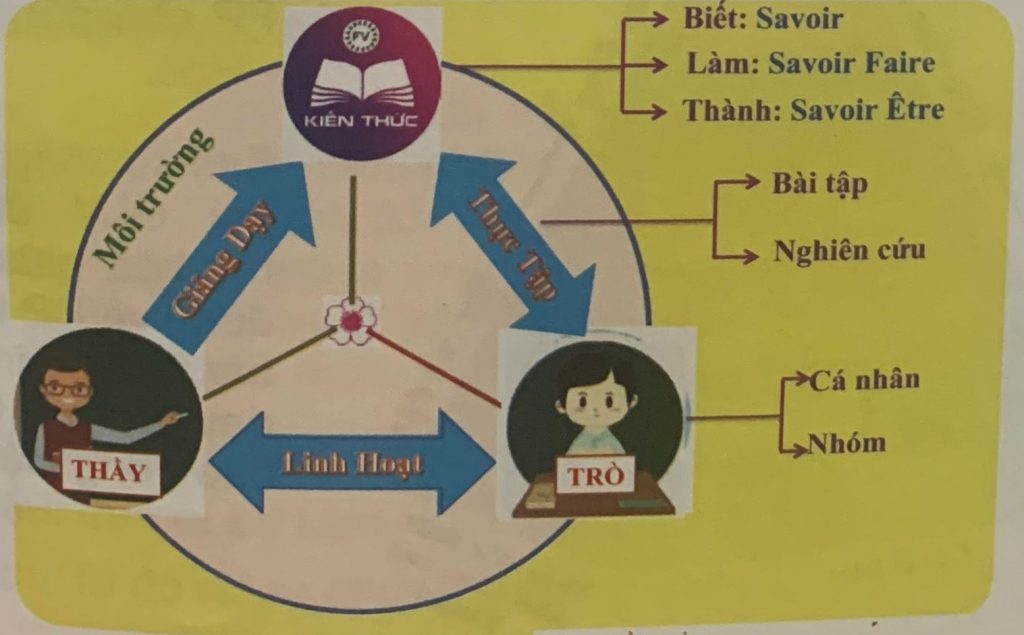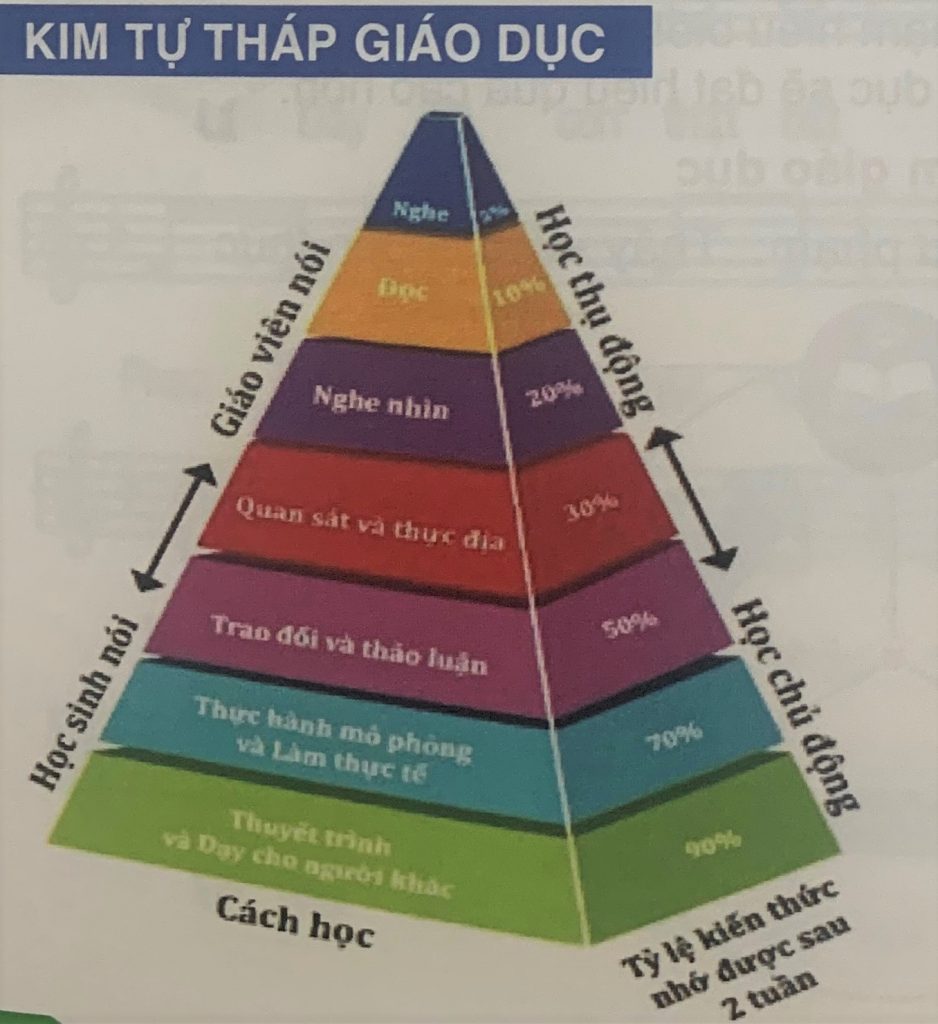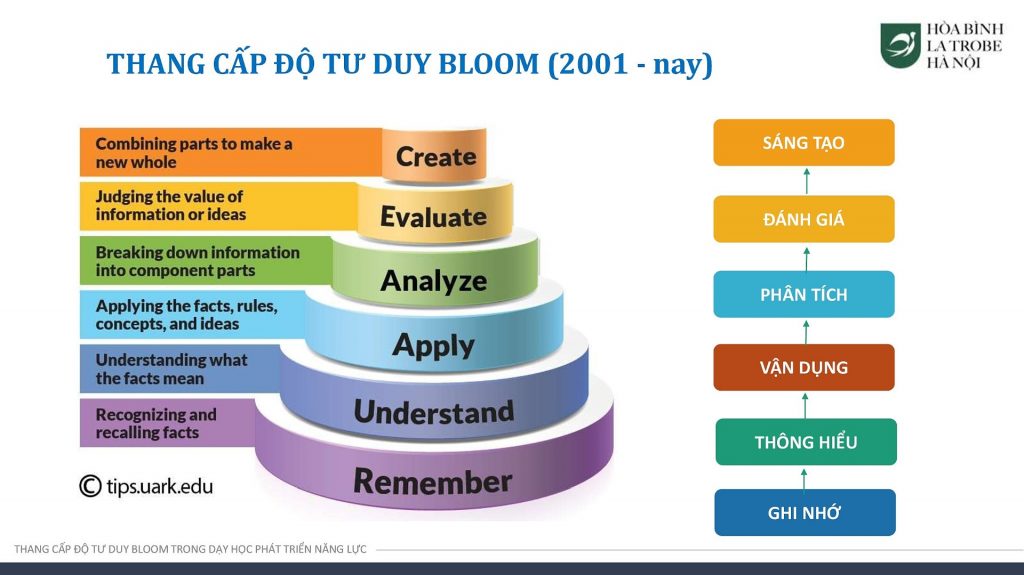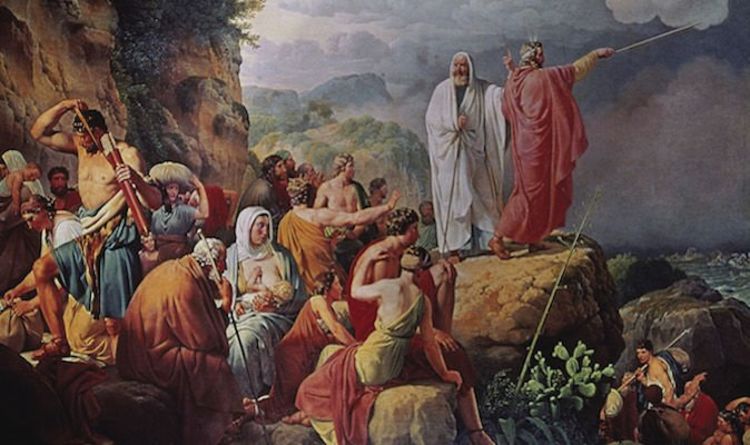Ngôi Lời đã trở nên người phàm và cư ngụ giữa chúng ta” (Ga 1,14). Trong lời tựa khi mở đầu tin mừng thánh Gioan đã dùng danh từ Ngôi Lời để nói Đức Giê-su chính là Lời của Thiên Chúa đã mặc lấy thân xác con người và sống giữa chúng ta. Vì thế, Thiên Chúa mà chúng ta tôn thờ không phải là một Đấng ở chốn xa vời nào đó không ai biết nhưng là Đấng đã và đang ở cùng chúng ta, sống cuộc đời giống như chúng ta ngoại trừ tội lỗi. Trong bài này, tôi xin giới thiệu Chúa Giê-su trong sứ vụ công khai theo nhãn quan của Tin mừng thứ tư, để qua đó chúng ta thấy được Chúa Giê-su chính là Đấng Ki-tô, và qua các việc làm cũng như lời giảng dạy của Ngài mà có thể hé mở cho chúng ta hiểu được Thiên Chúa và mức độ hoàn hảo của con người mà chúng ta có thể trở thành.
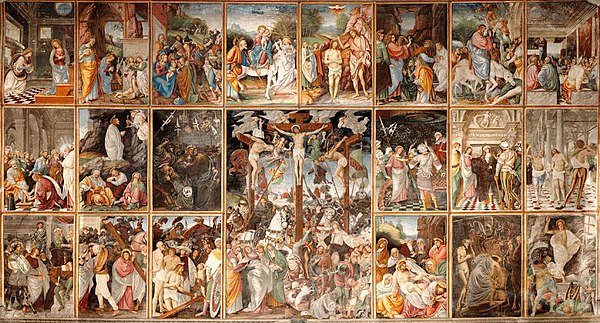
Ngay sau lời tựa Thánh sử đã bắt đầu viết về sứ vụ công khai của Đức Giê-su. Ông Gioan Tẩy giả là người đi trước để dọn đường cho Đấng Mê-si-a, ông làm phép rửa cho dân chúng tại sông Gio-đan. Khi ông làm phép rửa cho Chúa Giê-su ông đã thấy Thần Khí tựa chim bồ câu từ trời xuống và ngự trên Người. Chúa Giê-su là Thiên Chúa nhưng cũng hòa mình vào những người tội lỗi xin ông Gioan làm phép rửa để chia sẻ thân phận yếu hèn với loài người chúng ta. Qua phép rửa của ông Gioan Ngài cũng báo trước phép rửa của chúng ta. Hôm sau, ông Gioan lại giới thiệu Chúa Giê-su cho hai môn đệ của mình. Và Ngài đã bảo hai ông “Đến mà xem”, hai ông đã đến và bắt đầu sống với Chúa. Qua thời gian, họ sẽ khám phá ra Ngài chính là Đấng Mê-si-a và là Con Thiên Chúa. Chúng ta cũng vậy, càng tiến lên trên con đường đi theo Chúa Giê-su chúng ta càng hiểu Ngài hơn. Ngày thứ ba, Chúa cùng các môn đệ đến dự tiệc cưới tại Ca-na, khi thấy thiếu rượu thì Ngài đã làm dấu lạ đầu tiên hóa nước thành rượu. Thánh sử Gioan chỉ kể bảy dấu lạ Chúa đã làm trong sứ vụ công khai, đó là công trình mà người Con Thiên Chúa thực hiện, qua đó Ngài biểu lộ quyền năng của mình. Những điều đó hướng chúng ta đến công trình thực sự được giao cho Ngài: ban sự sống và canh tân thế giới. Chúa Giê-su tham dự một hôn lễ để chỉ ra rằng Ngài đến để chuẩn bị một hôn lễ khác – hôn lễ kết hợp Thiên Chúa với nhân loại. Khi thân mẫu nói với Ngài: “Họ hết rượu rồi”. Ngài đã trả lời rằng: “Giờ của con chưa đến”. Có thể hiểu đơn giản là chưa đến lúc Ngài biểu lộ quyền năng nhưng Ngài cũng ám chỉ giờ Thương Khó và Phục Sinh của Ngài. Qua lời xin của Đức Mẹ, Chúa Giê-su đã biến nước thành rượu như nhắc nhở chúng ta rằng: Chúa Giê-su đến ở giữa chúng ta và biến đổi cuộc sống hằng ngày của chúng ta nếu “Người bảo gì, các anh cứ việc làm theo” (Ga 2,5).
Sau tiệc cưới, Chúa Giê-su lên Giê-ru-sa-lem tẩy uế đền thờ. Ngài không phải tư tế hay người trông coi đền thờ nhưng đền thờ là nhà Cha của Ngài nên Ngài đã dùng roi mà đuổi những người buôn bán cùng chiên bò ra khỏi đền thờ. Như vậy là ứng nghiệm lời Thánh vịnh 69 “Vì nhiệt tâm lo việc nhà Chúa mà tôi đây phải thiệt thân”. Qua việc tẩy uế Chúa Giê-su đã nhắc nhở chúng ta ý nghĩa đích thực của đền thờ là nơi gặp gỡ Thiên Chúa. Ngoài ra, Chúa Giê-su còn ám chỉ Ngài chính là đền thờ đích thực của Thiên Chúa, và nhờ kết hợp với Ngài mà chúng ta cũng được trở nên đền thờ của Thiên Chúa. Trình thuật tiếp theo Thánh Gioan kể về cuộc đối thoại của Chúa Giê-su và ông Ni-cô-đê-mô một thủ lãnh người Do thái trong nhóm Pha-ri-sêu. Chúa Giê-su nói: “Không ai có thể thấy nước Thiên Chúa nếu không được sinh lại bởi ơn trên”. Đây cũng là hình ảnh báo trước bí tích Thanh Tẩy của chúng ta trong Chúa Thánh Thần. Chúa còn nói đến hình ảnh con rắn ông Mô-sê giương cao trong sa mạc để báo trước Con Người sẽ phải chết trên thập giá và sống lại. Để những ai tin vào Ngài thì được sống muôn đời. Vậy chúng ta phải tin vào Đức Ki-tô và kế hoạch cứu độ của Thiên Chúa mặc dù kế hoạch có điều khó chấp nhận đối với con người.
Sau đó, Chúa Giê-su bỏ miền Giu-đê mà trở về Ga-li-lê, khi băng qua Sa-ma-ri Ngài đã nói chuyện với một người phụ nữ nơi công cộng, đây là một sự xúc phạm đến thuần phong mỹ tục. Nhưng Ngài đã vượt lên các thiên kiến xã hội và chủng tộc cho chúng ta thấy rằng ơn cứu độ dành cho muôn dân chứ không riêng dân Do-thái. Qua cuộc đối thoại Ngài còn hứa ban nước hằng sống để ai uống vào không còn phải khát nữa. Đây cũng như một dụ ngôn về cuộc gặp gỡ của mỗi người chúng ta với Chúa Giê-su. Cách Chúa dùng để dẫn người phụ nữ ấy đến chỗ nhận ra và yêu mến Ngài cũng là cách Chúa dùng để hoán cải cuộc đời chúng ta từng bước một. Như người phụ nữ kia đã làm chứng để nhiều người tin vào Chúa Giê-su “Có nhiều người Sa-ma-ri trong thành đó đã tin vào Đức Giê-su, vì lời người phụ nữ làm chứng” (Ga 4,39) chúng ta là những người đã nhận biết Chúa thì phải làm chứng cho Chúa trong cuộc đời chúng ta. Khi trở về Ga-li-lê Chúa Giê-su làm dấu lạ thứ hai: Chữa con của một sỹ quan cận vệ nhà vua. Người sỹ quan đến xin Chúa Giê-su chữa cho con trai mình, Ngài chỉ phán: “Ông cứ về đi, con ông sống”. Vì ông ta đã tin nên con ông đã khỏi. Trước đó Chúa Giê-su có nói: “Nếu không thấy dấu lạ điềm thiêng các ông sẽ chẳng tin đâu”. Đây không phải là lời quở trách viên sỹ quan vì ông đã chứng tỏ lòng tin rất lớn, nhưng là người Do-thái và chính chúng ta. Vì thế, mỗi người chúng ta phải xét lại lòng tin hiện tại của chính mình.
Chúa Giê-su lên Giê-ru-sa-lem dự lễ và Ngài làm dấu lạ thứ ba: Chữa người đau ốm ở hồ Bết-da-tha vào ngày sa-bát. Những người Do-thái chống đối Chúa Giê-su vì Ngài chữa bệnh trong ngày sa-bát thì Ngài đáp lại rằng: “Cho đến nay, Cha tôi vẫn làm việc thì tôi cũng làm việc” (Ga 5,17). Ở đây, Chúa Giê-su cho chúng ta biết loài người dành một ngày nghỉ ngơi để tôn vinh Thiên Chúa là tốt; nhưng chính Thiên Chúa thì không hề nghỉ ngơi: thế gian không bao giờ vắng Chúa. Chúa Giê-su vốn là Con Thiên Chúa nên bắt chước Chúa Cha thay vì nghỉ ngơi như kẻ phàm trần. Ngài đã tỏ cho chúng ta thấy Ngài là Thiên Chúa nên Ngài làm chủ ngày sa-bát. “Đừng phạm tội nữa” (Ga 5,14) là lời Chúa Giê-su nhắc nhở người bệnh vì yếu lòng tin mà anh ta đã tìm đến ngôi đền ngoại giáo để được chữa lành (hồ Bết-da-tha là hồ được người ngoại đạo dâng cúng cho thần sức khỏe). Thánh sử cũng hiểu rằng phép chữa lành ở hồ là hình ảnh bí tích Thanh Tẩy. Do đó, lời Chúa nói với người được chữa lành là nói với tất cả những ai đã hoán cải và được thanh tẩy: “Đừng phạm tội nữa”.
Khi Chúa Giê-su sang bên kia biển hồ Ti-bê-ri-a Ngài thấy đông đảo dân chúng đến với mình và Ngài đã làm phép lạ hóa bánh ra nhiều. Đám đông ngồi ăn là hình bóng nước Thiên Chúa trong ngày Chúa Giê-su quy tụ toàn thể nhân loại đến dự tiệc cưới mà Thiên Chúa dọn cho họ. Phép lạ cũng nói lên rằng Chúa Giê-su chính là lương thực mà con người cần đến. Dân chúng thấy phép lạ thì cũng nhận ra Chúa Giê-su chính là Đấng phải đến thế gian. Sau đó, các môn đệ lên thuyền đi về Ca-phác-na-um, Đức Giê-su đi trên mặt biển mà đến với các ông. Dấu lạ này Chúa Giê-su đã mạc khải cho chúng ta quyền năng của Ngài trên thiên nhiên vì Ngài là Chúa. Trình thuật tiếp theo là diễn từ trong hội đường Ca-phác-na-um, Chúa Giê-su đã cho chúng ta biết Ngài sẽ trở thành bánh nuôi sống chúng ta khi chúng ta tin vào Ngài “Chính tôi là bánh trường sinh” (Ga 6,35). Ngài còn cho chúng ta biết Ngài là bánh trường sinh khi chúng ta ăn thịt và uống máu Ngài trong bí tích Thánh Thể “Ai ăn bánh này, sẽ được sống muôn đời. Và bánh tôi sẽ ban tặng, chính là thịt tôi đây, để cho thế gian được sống” (Ga 6,51).
Sau đó, Chúa Giê-su lên Giê-ru-sa-lem tham dự Lễ Lều, giảng dạy và làm chứng Ngài từ Thiên Chúa mà đến (Ga 7,16;29). Nghĩa là Ngài lệ thuộc vào Chúa Cha và Ngài biết rõ Chúa Cha. Ngày cuối cùng của Lễ Lều, Chúa Giê-su còn hứa ban nước hằng sống cho những kẻ tin vào Ngài. Ngày hôm sau, các kinh sư và người Pha-ri-sêu đem một người phụ nữ ngoại tình đến để thử Ngài. Nhưng Chúa Giê-su đã làm cho họ bỏ đi không ai ném đá người phụ nữ ngoại tình đó khi Ngài nói: “Ai trong các ông sạch tội, thì cứ việc lấy đá mà ném trước đi” (Ga 8,7). Chúa Giê-su không kết án người phụ nữ đó không phải vì người này vô tội nhưng vì lòng thương xót của Ngài và sự mong đợi con người hoán cải. Thái độ của Ngài hoàn toàn trái ngược với chúng ta, chúng ta thường hay kết án nhưng Ngài thì không. Khi những người Pha-ri-sêu tranh luận về lời chứng liên quan đến Chúa Giê-su, Ngài đã làm chứng về thần tính của Ngài, Đấng đã sai Ngài là Chúa Cha cũng làm chứng cho Ngài. Theo luật Do-thái lời chứng của hai người là lời chứng thật. Chính vì thế lời của Chúa Giê-su “Tôi Hằng Hữu” là lời chứng thật. “Sự thật sẽ giải phóng các ông” (Ga 8,32) chúng ta tưởng rằng chúng ta tự do nhưng đâu biết khi phạm tội là chúng ta làm nô lệ cho tội. Chúa Giê-su chính là sự thật, Ngài đến để giải phóng chúng ta khỏi ách nô lệ của tội lỗi. Vì Chúa Giê-su là sự thật nên ai sống trong sự thật là sống trong Chúa Giê-su. Sau đó Chúa Giê-su làm phép lạ thứ sáu: Chữa một người mù từ bẩm sinh. Mù là sống trong tối tăm, Chúa Giê-su là ánh sáng đã đến và soi sáng những ai ngồi trong tăm tối. Ngài đã mở mắt cho người mù khi anh này tin vào Con Người. Như vậy tin có nghĩa là thấy. Rồi Chúa Giê-su nói về mục tử nhân lành, Ngài chính là vị Mục Tử đích thực, hi sinh mạng sống vì đoàn chiên. Trước khi sứ vụ công khai của Chúa Giê-su kết thúc, Thánh Gioan đã thuật lại phép lạ thứ bảy: Cho anh Lazaro sống lại như báo trước cuộc phục sinh của Ngài. Qua phép lạ Chúa Giê-su đã mạc khải cho chúng ta Ngài chính là Đức Ki-tô, khi bày tỏ quyền năng của Ngài trên sự chết. Như anh Lazaro, những ai được lãnh ơn tha tội thì được phục hồi sự sống.
Trên đây là giới thiệu cuộc sống công khai của Chúa Giê-su theo nhãn quan Tin Mừng thứ tư. Qua đời sống của Ngài, Thánh Gioan muốn nhấn mạnh rằng Chúa Giê-su chính là Đấng Mê-si-a. Nhìn vào bảy dấu lạ được trình thuật, chúng ta có thể nhận ra được quyền năng Thiên Chúa nơi Đức Giê-su Ki-tô. Cùng với lời chứng về Ngài nếu chúng ta tin Ngài từ Thiên Chúa mà đến thì sẽ được cứu độ. Trong Tin Mừng, có nhiều hình ảnh ám chỉ đến Bí Tích Thanh Tẩy: Chúa Giê-su chịu phép rửa, hóa nước thành rượu, cuộc đối thoại với ông Ni-cô-đê-mô, phép lạ tại hồ Bêt-da-tha; việc Chúa Giê-su mạc khải cho chúng ta biết Ngài là bánh hằng sống, ai ăn thịt và uống máu Ngài thì có sự sống đời đời; hay việc hứa ban nước hằng sống trong ngày kết thúc tuần Lễ Lều; và phép lạ thứ bảy: cho anh Lazaro sống lại, tác giả Tin Mừng muốn cho chúng ta thấy rằng Chúa Giê-su là Đấng Cứu Thế ban sự sống. Cuối cùng tất cả những điều được Thánh sử ghi chép là để cho chúng ta tin rằng Đức Giê-su là Đấng Ki-tô và để nhờ tin vào Ngài mà chúng ta được hưởng sự sống đời đời.



